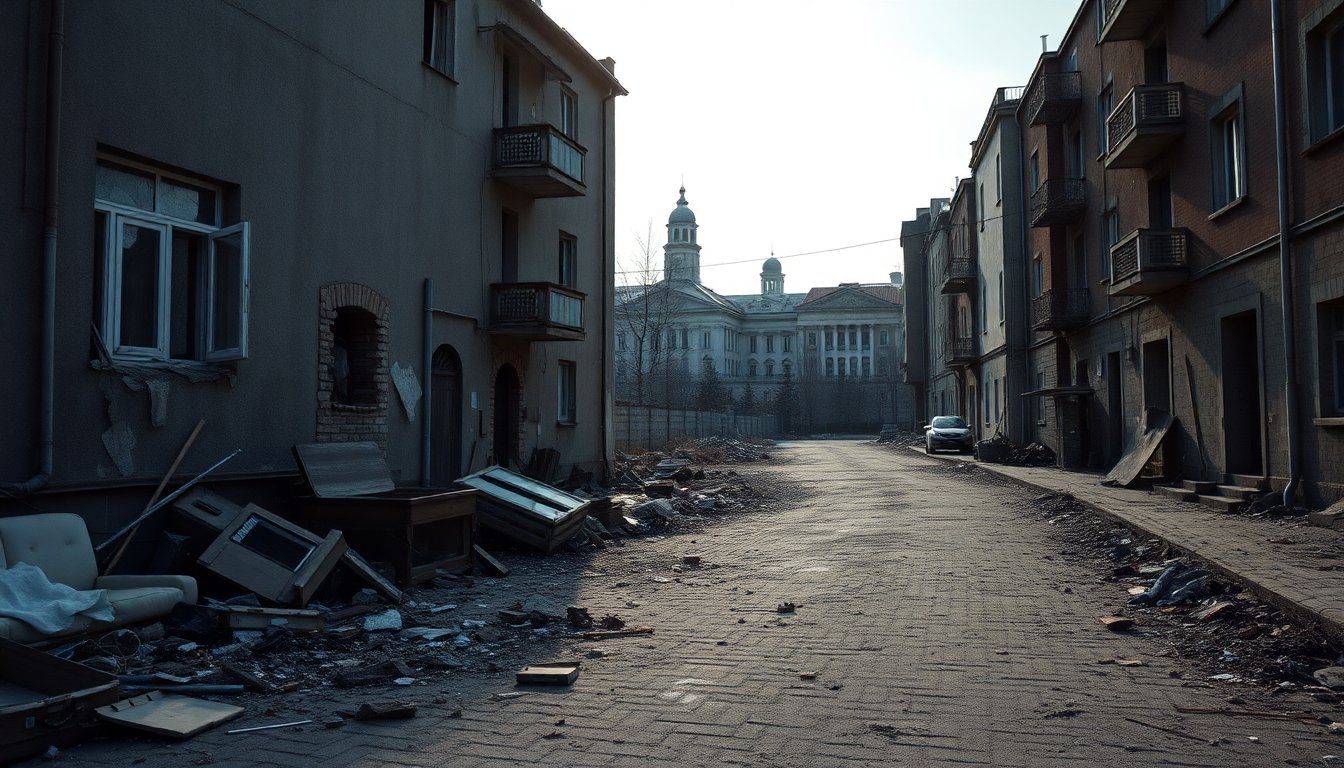Table of Contents
The onset of the conflict in Ukraine in marked a significant turning point, as reports emerged highlighting rampant looting in areas captured by Russian forces. From residential homes to cultural institutions, a wide array of items, including personal belongings and essential goods, were stripped away.
As the war unfolded, it became evident that the repercussions of this violence were not confined to Ukraine alone; they seeped into Russian towns as well, revealing a deeper layer of brutality in the ongoing military campaign.
The dark side of military recruitment
Among the troubling narratives that have surfaced is the recruitment of over 170,000 individuals from prisons and detention centers into the ranks of the Russian military. These recruits, including individuals like Alexey Kostrikin, have exhibited disturbing tendencies, engaging in heinous acts of violence against civilians.
Kostrikin, who was apprehended on November 5, 2025, stands accused of committing a murder and sexual assault in Belgorod, showcasing the violent potential of those brought into the conflict.
Criminal resurgence among veterans
Following their return from the front lines, many of these ex-convicts have not reformed but instead resumed their previous lifestyles of crime.
Reports from Novaya Gazeta Europe indicate that more than 1,130 former prisoners have reverted to criminal activity shortly after their discharge from military service. This alarming trend raises questions about the implications for social stability in regions already grappling with the aftermath of war.
A cry for help from local residents
Within the Belgorod region, residents have increasingly voiced their concerns over the escalating incidents of looting, with a staggering 78 reports directed at regional authorities regarding these crimes. An investigation by the outlet 7×7 highlighted that many individuals felt compelled to repeatedly contact officials to garner any response.
For instance, Mikhail Proshutinsky sought assistance after discovering that Russian soldiers had taken over his evacuated home, only to be met with bureaucratic obstacles and delays in addressing his plight.
Frustrations with the authorities
As the conflict continues, the local populace has expressed deep frustration with the authorities’ inaction. Many residents, like Maria from Krasny Khutor, reported feeling abandoned as police cited the ongoing shelling as a reason for their inability to investigate looting incidents. Meanwhile, regional officials claimed that military and volunteer units were patrolling the area, yet many civilians felt more threatened by their own soldiers than by the conflict across the border.
Discrepancies in reported crime rates
Despite the numerous complaints from residents about looting, the official response has been minimal. Local government representatives maintained that no cases of looting had been recorded for a long time, a claim that stands in stark contrast to the increasing reports from the community. Governor Vyacheslav Gladkov eventually acknowledged the issue in, promising to enhance security measures to protect citizens’ properties.
In the neighboring Kursk region, approximately 200 cases of looting have been documented; however, there remains ambiguity around whether these crimes were committed by Russian soldiers or foreign forces during their time in occupied territories. The official narrative tends to downplay the extent of these incidents, further complicating the residents’ trust in their leaders.
High-profile cases of violence
Incidents of violence attributed to military personnel have also made headlines. One notable case involved Dmitry Stenkin, who was charged with attacking a family in Giry, resulting in the death of a mother and injuries to her husband. This incident, along with Kostrikin’s history of violent offenses, paints a troubling picture of a military force that includes individuals with criminal backgrounds, raising concerns about their integration into society.
As the war in Ukraine continues to unfold, the implications of violence and looting are felt not only in the affected regions but also in Russian towns that are grappling with the consequences of their own soldiers’ actions. The cycle of violence threatens to destabilize communities, and the echoes of warfare resound far beyond the battlefield.





